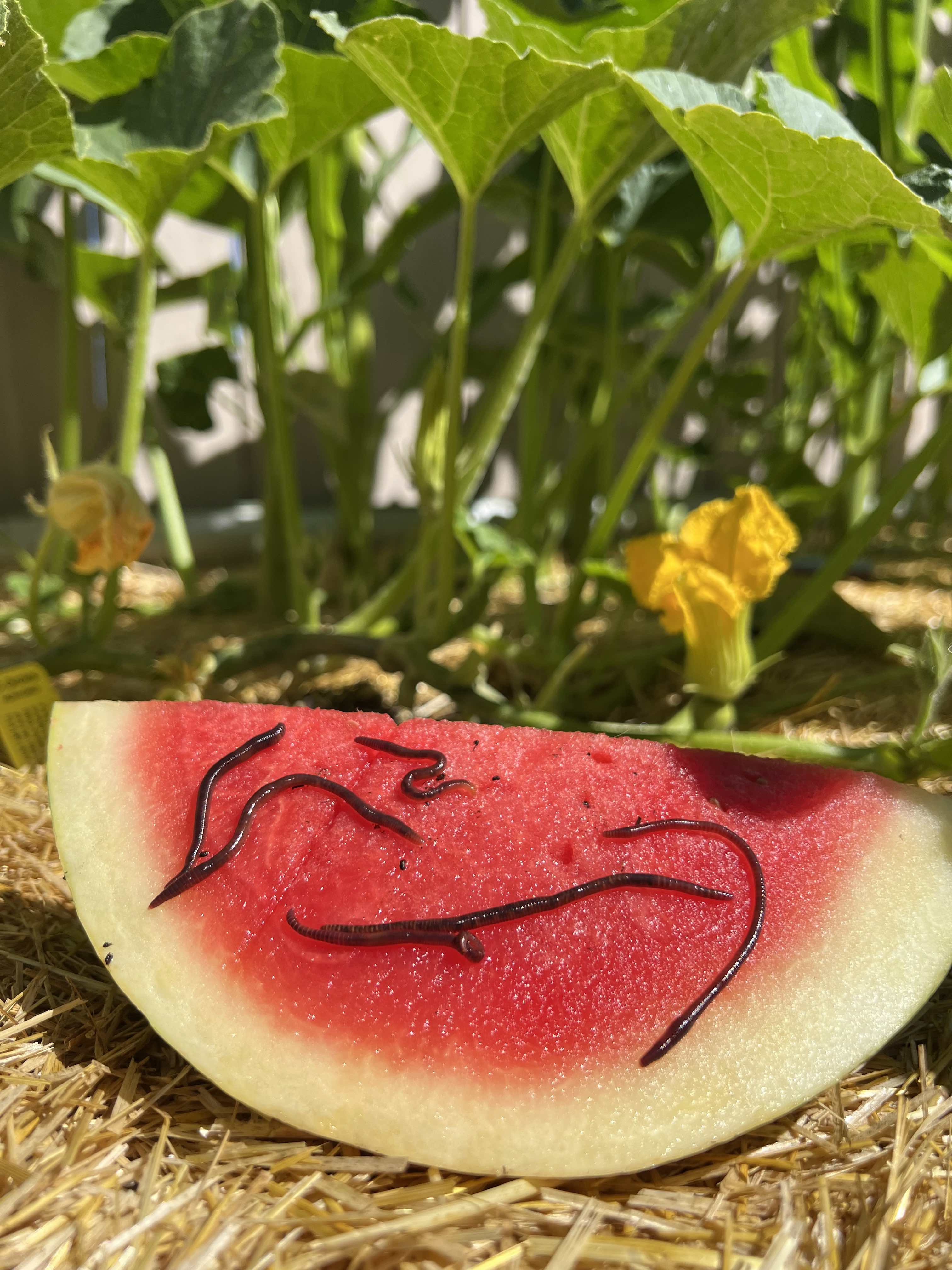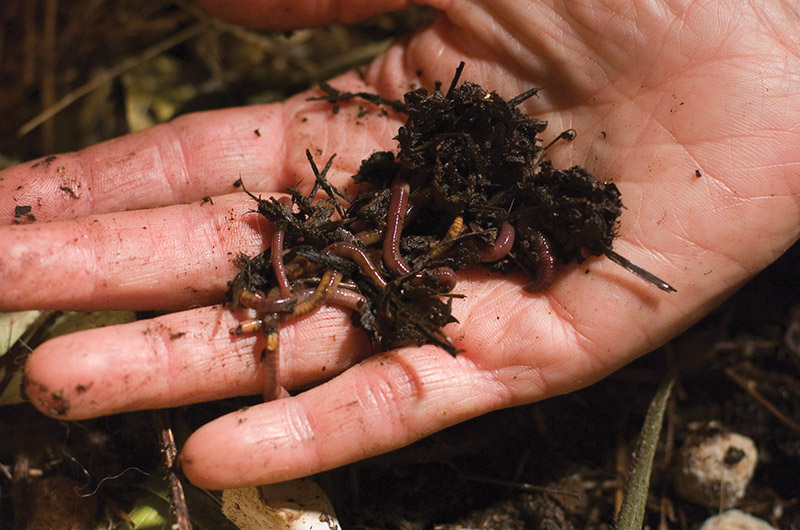Red Wiggler Worms - Perfect for Vermicomposting and Soil Enrichment
Red Wiggler Worms - Perfect for Vermicomposting and Soil Enrichment
Blog Article
Optimizing the Perks of Red Wiggler Worms: A Comprehensive Handbook for Home Gardeners and Urban Farmers
In the realm of sustainable horticulture techniques, red wiggler worms stand as unhonored heroes, quietly transforming organic waste right into nutrient-rich castings that can function wonders for dirt health and wellness. By exploring the complexities of how to successfully care for and optimize the advantages of red wiggler worms, individuals can unlock a riches of opportunities for boosting the sustainability and efficiency of their horticulture endeavors.
Comprehending Red Wiggler Worms
Red Wiggler worms, renowned for their efficient composting capabilities, are a varieties of earthworms commonly made use of in vermiculture practices. These worms, clinically called Eisenia fetida, flourish in rotting natural product, making them ideal prospects for composting (Red Wiggler Worms). Red Wigglers are starved eaters, efficient in eating their own weight in organic waste daily. Their gastrointestinal procedure breaks down raw material into nutrient-rich castings, which are an important resource for enriching dirt and advertising plant development.
One trick attribute of Red Wiggler worms is their reproductive price. These hermaphroditic creatures possess both male and female reproductive body organs, permitting them to duplicate swiftly under positive conditions. A fully grown Red Wiggler can create numerous spawn in a brief duration, guaranteeing a stable populace within a composting system.

Establishing a Worm Bin
When developing a worm container for vermiculture purposes, proper preparation and interest to detail are important for producing a favorable atmosphere for Red Wiggler worms. Begin by picking a suitable container for your worm container. This can be a plastic or wood container with a lid to keep moisture levels and safeguard the worms from light. Make sure that the container has water drainage holes at the base to protect against waterlogging.

Area the worm bin in a trendy, dark place far from direct sunlight and extreme temperature levels. On a regular basis keep an eye on the wetness levels, adding water if the bed linens feels flaky or completely dry. Feed the worms a balanced diet regimen of fruit and veggie scraps, avoiding citrus fruits, onions, and spicy foods. By adhering to these steps, you can establish a thriving worm container that will effectively process organic waste into nutrient-rich vermicompost for your yard.
Feeding and Maintaining Worms
Making sure a healthy and well balanced diet regimen is crucial for the health and performance of Red Wiggler worms in a vermiculture system. Red Wigglers are ravenous eaters, efficient in eating their own body weight in raw material daily. To preserve a thriving worm population, it is vital to supply them with a selection of food scraps such as fruit and vegetable peels, coffee grounds, tea bags, and crushed eggshells. However, it is necessary to avoid feeding them citrus fruits, onions, garlic, dairy items, meat, and oily foods as these can be unsafe to the worms or create undesirable odors in the container.
Correct moisture levels are additionally essential for the health of Red Wiggler worms. By faithfully monitoring their diet plan, wetness, and environmental problems, home garden enthusiasts and metropolitan farmers can sustain a healthy and productive Red Wiggler worm population for composting Find Out More objectives.
Harvesting Worm Spreadings
To efficiently remove nutrient-rich worm spreadings from the vermicompost, a methodical harvesting procedure is essential for taking full advantage of the composting benefits. The very first action in harvesting worm castings is to encourage the worms to move to one side of the bin.
After the castings have actually been harvested, it is vital to divide any staying worms from the castings to avoid hurting them throughout storage or application. One effective technique is to produce cone-shaped heaps of spreadings under intense light. Worms will instinctively relocate far from the light, enabling easy separation and elimination.
Lastly, the harvested worm castings need to be stored in a trendy, dark, and completely dry area to keep their top quality and performance as a nutrient-rich soil change. By following these steps, home gardeners and metropolitan farmers can make the most of the advantages of red wiggler worms in their vermicomposting systems.
Utilizing Worm Castings in Horticulture
The unification of nutrient-rich worm castings right into yard soil can dramatically boost plant growth and total soil health. Worm castings, likewise known as vermicast, are an all-natural fertilizer produced by red wiggler worms as they damage down natural matter. These castings are rich in necessary nutrients like nitrogen, phosphorus, potassium, and helpful microbes that advertise plant development and improve dirt framework.
When using worm spreadings in gardening, it is vital to mix them completely right into the soil or utilize them as a top clothing around plants. The slow-release nature of worm castings ensures a consistent supply of nutrients to plants with time, minimizing the threat of nutrient leaching and promoting long-term dirt fertility. Furthermore, worm spreadings help improve soil aeration, water retention, and microbial task, developing a healthy and balanced setting for plant roots to flourish.

Conclusion
To conclude, the utilization of red wiggler worms in home gardening and urban farming can substantially benefit dirt wellness and plant development. By recognizing exactly how to establish up and maintain a worm bin, feed the worms properly, and gather their nutrient-rich castings, gardeners can optimize the advantages of these earthworms. Incorporating worm spreadings right into gardening methods can enhance soil fertility and general plant performance. Overall, red wiggler worms use a lasting and effective service for improving yard and ranch returns.
In the world of sustainable gardening practices, red wiggler worms stand as unrecognized heroes, silently changing natural waste into nutrient-rich castings that can function wonders for soil health.When establishing a worm container website here for vermiculture purposes, appropriate prep work and attention to detail are crucial for developing a favorable environment for Red Wiggler worms. The initial step in harvesting worm spreadings is to encourage the worms to migrate to one side of the container. Worm spreadings, additionally understood as vermicast, are a natural plant food generated by red wiggler worms as they break down organic issue. By recognizing exactly how to set up and maintain a worm container, feed the worms appropriately, and collect their nutrient-rich spreadings, garden enthusiasts can take full advantage of the benefits of these earthworms.
Report this page